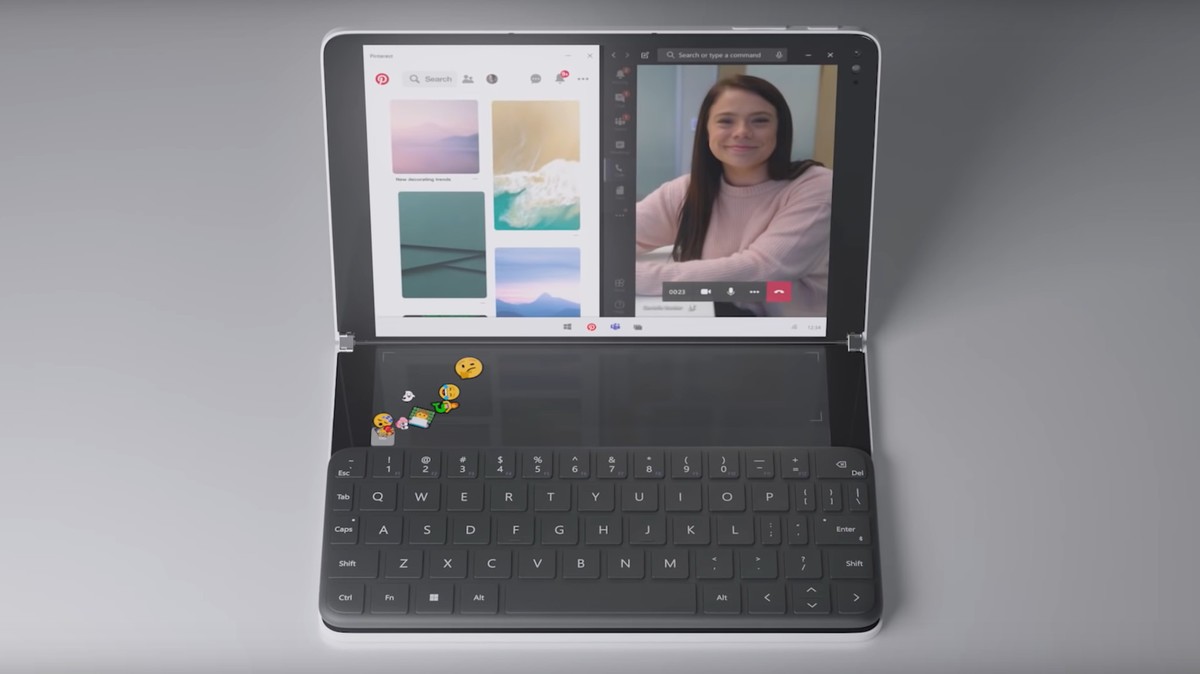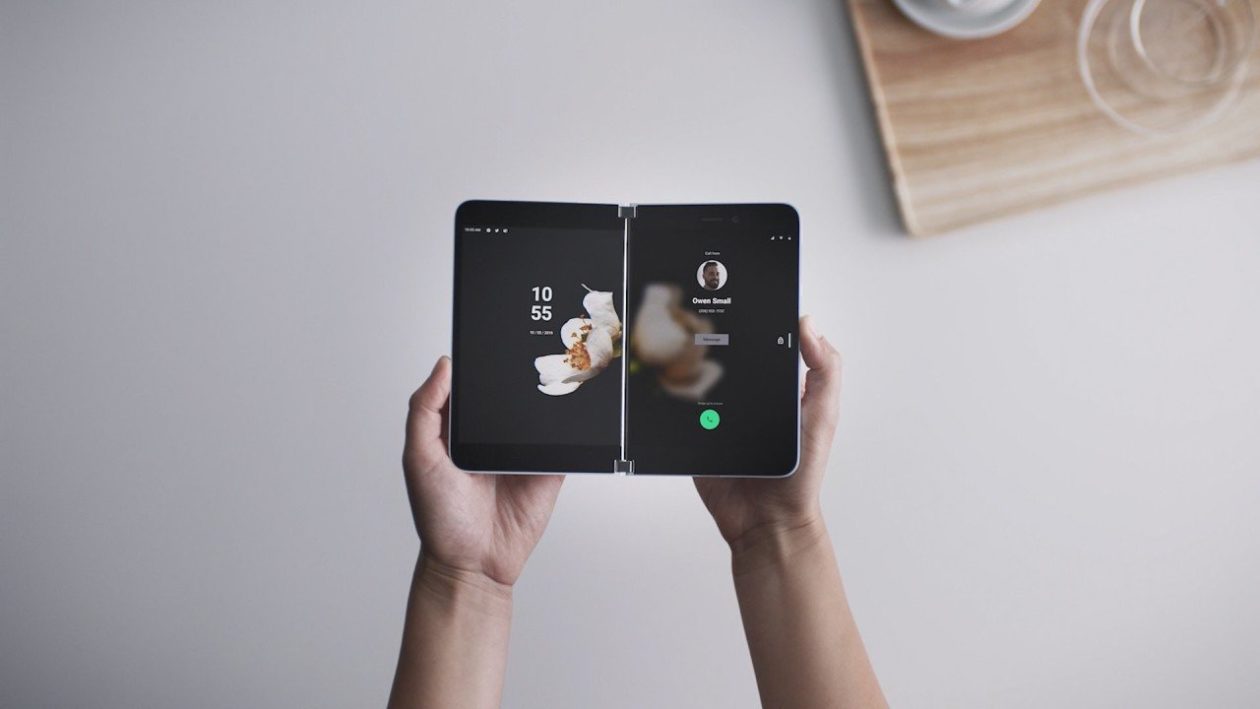Ah, the famous end of the third quarter: the time when all technological giants present their weapons for the end of the year and for the next life cycle of devices in various categories. Apple has already shown its letters (or part of them), Amazon too and Google is expected to do so soon. Today, it was the Microsoft.
The Redmond giant took the stage for a special event in New York and presented a lot: we have updates for the main models of the line Surface and new family members, like a competitor for AirPods and … a smartphone. With Android! Yes, that’s right – keep reading to find out what awaits us.
Surface Laptop 3
The first novelty of the day was the third generation of Surface Laptop, the “traditional” notebook of the line. And Microsoft did not spare nudges to Apple and MacBook Air, the device’s main competitor – starting with performance: according to the manufacturer, the new Surface is up to 3x faster than an equivalent Apple computer. Here we have 10th generation chips from Intel and, optionally, an AMD Ryzen Surface Edition processor (the most powerful mobile processor ever created by AMD, according to Microsoft).

Externally, the new Surface Laptop is very similar to previous generations, but we now have a 15 inch option that joins the 13 ″ model. The larger notebook can also be purchased in an all-metal version, which dispenses with the Alcantara surface around the keyboard / trackpad for a more traditional finish.
Another serious nudge on the MacBook Air came in terms of keyboard and repairability. Microsoft spent good minutes talking about the durability of the keys, and got applause from the audience when they simply removed the keyboard surface from the computer by unscrewing four screws – which allows the keys to be replaced and gives access to various internal components (the SSD, for example). example, it is easily replaceable).
The Redmond giant made yet another change much requested by users: the Mini DisplayPort connection of the previous generation goes out and a USB-C port (in addition to the USB-A port that has always existed). The battery continues to be recharged by the proprietary connector and can reach 80% charge in less than 1 hour.
The Surface Laptop 3 will be launched on the 22nd at prices starting from $ 1,000 (13 inches) or $ 1,200 (15 inches). Good recipe, huh?
Surface Pro 7
Meanwhile, the original product of the Surface family gained occasional news. THE Surface Pro 7 it’s still a 12.3-inch tablet with its celebrated rear support with infinite adjustment. We still have the magnetically attached keyboard cover, and the Surface Pen for drawings and writing (and precise Word edits, which are new).

But we have improvements, too – like an unprecedented USB-C port, so long requested by users. Internally, Microsoft now includes 10th generation Intel processors, with several options (both i3, dual-core, and i5 / i7, four-core).
Surface Pro 7 will be launched on the 22nd, at prices starting from $ 750 (for the version with Core i3 chip, 128GB of storage and 4GB of RAM).
Surface Pro X
Microsoft is also thinking about the future of Surface Pro, and is starting to give clues to that future with Surface Pro X – a new line, with new paradigms and another range of benefits. We have a 13-inch screen here and very few edges (so much so that it is the same size as the Surface Pro 7), with a density of 267 pixels per inch. It is also extremely thin, only 5.3mm thick, and weighs only 774g – but the infinitely adjustable support is still there.

The regime was possible because Microsoft abandoned Intel processors here in favor of its own solution. It is the SQ1 chipset, based on the ARM architecture of Snapdragon chips but with the capacity to handle more energy (7W, more precisely) and deliver better performance in processing and graphics (9 teraflops).
There are other cards up its sleeve: the flash storage module, for example, is replaceable (theoretically not by the user, but by an authorized service center). All models feature fast charging and built-in LTE.
We also have here a new stylus, called Surface Slim Pen, which will be sold separately and can be loaded in the (also new) Signature Keyboard Cover, which has a dedicated space to leave the marker. In terms of software, Microsoft has partnered with Adobe to bring Creative Cloud apps to the new device – including Fresco, just released exclusively for iPads.
Surface Pro X is already in pre-order and will be released on November 5th at prices starting from $ 1,000.
Surface Earbuds
As it could not be otherwise, Microsoft also entered the trolley of headphones completely wireless. These are the Surface Earbuds – entitled to a slightly questionable design, which looks like a plug in your ear.

Visual choices aside, the headphones have a different proposition than the other competitors in the segment and seem to be more focused on productivity than the listening experience. We have here a set of microphones dedicated to hearing your voice for carrying out commands – integrated, especially, into the Office suite (yes): you can browse through slides PowerPoint or generate instant captions in a presentation, for example, with a little help from the headphones.
The outer surface acts like small touchpads, and you can control aspects like playback or volume from them. Surface Earbuds also have 8 hours of playback (or 24 hours, considering the refills of the case) and active noise cancellation.
Microsoft promised the headphones for the end of the year, for $ 250 – yes, well above AirPods and other competitors. We’ll see if the public will buy the idea.
Surface Neo
Remember the mythical Courier? The dream of Microsoft’s two-screen device seemed to have died off almost a decade ago, but now it is – in a way – coming in the form of Surface Neo. It is a foldable device, with two screens (no, it is not a foldable screen) and its own operating system. It is a “new category” of products, according to the company.

We have here two 9-inch screens (which use the thinnest LCD panels ever created, according to the company), connected by more than 60 microcoaxial cables thinner than strands of hair; the mechanism that links the two parts can be folded 360º and is strong enough to position one of the screens upright on a surface, such as a laptop.
This is one of the skips of the Surface Neo cat: it will have an accessory that, at first glance, looks like a simple Bluetooth keyboard. When positioning it on top of one of the screens (the one that is lying down), however, the device recognizes the peripheral and makes the panel work with it, showing a digital trackpad or a second window on the top of the keyboard , depending on its placement (you can also remove the keyboard and use it as a common accessory).
Unfolded, the Surface Neo has a 13-inch “total” screen, with an 8.9mm gap between them. Each part of the device is only 5.6mm thick, and the whole thing weighs only 655g. It also supports the Surface Slim Pen, which attaches magnetically to the rear of the device. In terms of software, we have here a kind of new operating system, the Windows 10X (a version of Windows 10 designed specifically for dual screen devices).
Surface Neo will be equipped with Intel chips “Lakefield”, and will still have a development time before it is released: according to Microsoft, the device will be available in the next vacation period – that is, in about a year.
Surface Duo
We leave the most intriguing to the end. THE Surface Duo it is also a foldable two-screen device and will also be launched at the end of next year, but it has several peculiarities.

First, despite Microsoft’s reluctance to call it a smartphone, it makes calls, representing the company’s first venture in the business since the death of the Lumia line. Second, no, it doesn’t run any version of Windows – instead, here is a special version of Android, produced in partnership with Google.
The decision is very consistent with Microsoft’s recent direction under Satya Nadella. In the “new” Big M, it doesn’t really matter which operating system you’re using, as long as you’re immersed in the company’s ecosystem and using your apps and services. And that is what Surface Duo has to spare, with an Android adapted to offer Microsoft experiences in the palm of your hand (although you still have access to Google services, including the Play Store, of course).
Here we have two 5.6-inch screens in a body that can also be folded in 360º; unfolded, it features an 8.3 “unified” screen. You can use the screens to open different apps, or use one to display a keyboard or game controller.
The Surface Duo will be equipped with a Qualcomm Snapdragon 855 processor, but its prototype character still has several shortcomings. Microsoft has not yet decided, for example, whether to include a rear camera in the device or to keep only the selfie on one of the inner sides; all of this will be decided over the next year, before its launch.
What about?
via GeekWire
